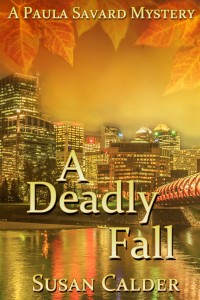I was on the road when my monthly blog post on my publisher’s website went live and missed posting this link. I write about how my choir manages to connect during this time of social distancing. (I had to scroll up to see the post)
![Shout-sister[1]](http://susancalder.com/wp-content/uploads/2020/04/Shout-sister1-300x199.jpg)
I was on the road when my monthly blog post on my publisher’s website went live and missed posting this link. I write about how my choir manages to connect during this time of social distancing. (I had to scroll up to see the post)
![Shout-sister[1]](http://susancalder.com/wp-content/uploads/2020/04/Shout-sister1-300x199.jpg)
In 2009 my husband Will and I spent a month in Italy. I hadn’t been to Europe in fourteen years
and was eager to return to its history and culture, but a little anxious about the adventure. Shortly before we were due to leave, the swine flu hit Mexico and the United States. Unlike most flus, including the current Coronavirus (COVID-19), the swine flu (H1N1) didn’t largely kill the elderly and sick. A strain of the 1918 Spanish influenza virus, many healthy, younger people succumbed to H1N1, which quickly spread to Europe. People talked of a worldwide pandemic. And here we were setting out on a plane into this risky situation. I thought of cancelling the trip. But, out of my anxiety came an idea for a short story. A man, grieving the death of his wife, travels through Italy, worried about catching the swine flu. I’d call the story “Pandemic.”
 |
| 2009 H1N1 (Swine flu) Pandemic – laboratory confirmed cases and deaths |
In the Rome airport, I noticed several people wearing surgical masks. This struck me as unusual, but now would be common for travel at any time. When I later wrote the story, I included this detail along with others I wrote in a journal I carried through Rome, Venice, Tuscany and Sorrento. Will and I rented weekly apartments in these locations, as did Tony, my story protagonist. I took photos and made notes about our residences, which were part of the story landscape along with the tourist attractions that Tony, Will and I visited.. “Pandemic’s” first turning point occurs when Tony is impressed by Bernini’s sculptures in the Galleria Borghese Museum in Rome. Tony thinks, as I did, how did Bernini make a pinch of skin on a marble thigh look soft and real?
Aside from occasional sightings of surgical masks, I forgot about the swine flu while absorbing Italy’s museums, eating pizza and drinking wine in cafes, exploring ancient sites and warrens of medieval streets. After our trip, The World Health Organization declared H1N1/09 a Pandemic. It was tragic for the people who died. They were fewer in number than those who die annually from a seasonal flu, which is the case so far with COVID-19.
At home, I returned to my novel-in-progress, but Tony’s story kept churning through mind. Eventually, I sat down and wrote “Pandemic,” my first work of fiction set in another country. Aided by my photos and journal notes, I found setting descriptions easier to write than I had in my stories set in Canada. A scene of Tony getting acquainted with two sisters while climbing the Leaning Tower of Pisa felt fresher than my earlier scenes of people meeting in ordinary, North American restaurants. I’ve sometimes thought of “Pandemic” as part story, part travelogue.
 |
| In “Pandemic,” Tony and the sisters take comical photos of each other ‘holding up’ the Leaning Tower of Pisa |
“Pandemic” isn’t published yet. At almost 12,000 words, it’s too long for most short story markets and too short for a novella, much less a novel. I’ve broken “Pandemic” down into four standalone stories, set in the different Italian locations. The Venice standalone is titled “Gondolier Groupies;” Tuscany is “La Brezza.” Still no luck with publication. Now, COVID-19 has prompted me to dust off “Pandemic” and revise the whole story again.
I’m finding it interesting to work on a story that aligns with the zeitgeist. The prevailing social mood infuses Tony’s actions and the story descriptions. I’d have thought that immersing myself in the fictional world of a pandemic similar to COVID-19 might make me anxious about our present situation. Instead, it’s a release from worries and the constant talk of disaster, and this is one reason writers write.
 |
| In Venice, Tony embarks on an ill-fated adventure with two young women and a pair of gondoliers |
The Coronavirus (COVID-19) got me thinking about my short story, “Pandemic.” I wrote the 12,000 word story 10 years ago, but it was never published. COVID-19 has inspired me to revise “Pandemic.” I find the process helps me put our current crisis into perspective. I write about this in today’s BWL author blog.
![Worldwide-distribution-of-swine-flu-Pandemic-H1N1-2009-Map-reproduced-with-permission[1]](http://susancalder.com/wp-content/uploads/2020/03/Worldwide-distribution-of-swine-flu-Pandemic-H1N1-2009-Map-reproduced-with-permission1-300x171.png)
Earlier this month, I enjoyed Winterlude in Ottawa. Here’s the blog post I wrote for my publisher’s website.
I Embrace Winter – Sort Of
This winter, I’ve had the opportunity to attend Winterlude in Ottawa, Canada, the seventh coldest capital city in the world, according to WorldAtlas. Rather than huddle indoors, Ottawa region residents embrace the season each year with a festival spanning three weekends in early February. The focal point is the world’s largest skating rink, running 7.8 km. along the Rideau Canal from downtown to Dow’s Lake recreational area.
My husband and I stayed near Dow’s Lake. When the Skateway opened, we headed out to the lake, eager to glide along the ice. We hadn’t skated in ten years. I laced up my skates, took a step – and retreated to the bench. Ice is slippery. Skate blades are too thin the for support. I don’t want to fall and break a bone. My skating career ended, I consoled myself with a Beavertail. These pastries, sold at shacks on the canal, are fried dough in the shape of Canada’s national animal’s tail topped with anything imaginable. I usually get the Killaloe Sunrise, with cinnamon, lemon and sugar that brings out the flavour of the dough. The calories keep you warm in winter.
 |
| Hazelnut spread, peanut butter and Reece’s Pieces on a Beavertail. As a true Canadian, I want to try maple someday. |
Other highlights of Winterlude include dragon boat races on the frozen lake, snow slides in a park on the Quebec side of the river, and an international ice carving contest. Ottawa’s fickle winter weather played havoc with the sculptures this year. A mild spell a few days after the carving competition ruined the ice statues’ delicate features.
 |
| A carver at work on downtown Sparks Street. |

Today I write about my visit to Ottawa’s Winterlude this year on the BWL Author BlogSpot.



On Friday, the Calgary central library launched the Print(ed) Word documentary to a celebratory audience. In the film, the twelve artist/writer partners talked about their experiences with this collaborative project. I’m proud to be part of it. My partner, Sylvia Arthur, did a great job of turning my short story, When a Warm Wind Blows Off the Mountains, into an art book. All twelve books are on permanent display in the central library, housed in an alcove off the 4th floor Great Reading Room. For a taste of the works, have a look at the documentary movie trailer.
Here’s my blog post, which appeared on my publisher BWL’s website on Jan 12th.
I enjoy year end lists. Even better are lists at the end of a decade. Here’s my list of five changes to my writing life that happened in the ten years from January 2010 to January 2020.
1. I became a published author. Prior to 2010, I’d published short stories, poems and articles. They all helped me feel like a real writer and led me to teaching writing courses and workshops, but the term ‘published author’ is generally reserved for those who have published a book. This was a milestone I longed to achieve. After years of work, my first novel, was published in spring 2011.
2. I stepped up my social media presence. I was on Facebook before Deadly Fall was published, but only had a small number of Facebook friends, all people I knew in my real life. After my book publication, I started accepting requests from virtual strangers and posted (too many) notices about my literary activities and accomplishments in the interests of promoting the novel. I also joined Twitter and had my son’s friend create my author website, which automatically tweets my website posts. In addition, I’ve dabbled in Link-In, Goodreads, Pinterest and Instagram. It seems that just when I get onto one social media site something else becomes the hot new thing.
 |
| Social Media can make me feel pulled in all directions |
3. My office moved to a different room in my house. Okay, I’m cheating here because my home office changed when my husband retired in fall 2007. But it took a few years for us to settle into our new routine. When he was working, as soon as he left for the office I’d go to my den upstairs to write. My retirement gift to him was our den, a sunny spot that looks out to a green space. I moved my work to our north-facing guest room with a street view. I figured that if he had an appealing room for his various computer activities, he wouldn’t distract me from my writing, while I don’t need the view while I’m forming stories in my head. The plan worked. After breakfast these days, he goes to his den and I huddle in the corner of our guest room. But lately, I’ve felt an urge for a brighter, more scenic and spacious room of my own for writing.
| Jane Austen wrote pretty good novels at this small writing table with its view of the clock in the family sitting room. |
4. I became a regular at a writing festival. Calgary’s When Words Collide Festival For Readers and Writers launched in August, 2011. I went the first year, since it’s held in my home city, and haven’t missed a year since then. This coming August will be the festival’s 10th anniversary. I’m bound to find whatever I’m looking for as a writer there, whether it’s information about the craft or getting published or promoting my books. Toss in a little fun for a winning combination.
| Dressed for the festival’s banquet, Roaring Twenties theme |
.
5 At When Words Collide, I found my publisher. BWL published my second and third novels and there’s a fourth one in progress. In November, BWL released a new edition of my first book, retitled A Deadly Fall. The re-publication brings the 2010s full circle and seems a fitting end to the decade.

For January on the BWL Author Blog. I talk about five changes in my writing life during the past decade, from January 2010 to January 2020.
New year’s is a time of wrap-ups for the year we’re leaving. It’s also the season for the best-of-the-year competitions. My publisher suggested we enter our 2019 novels in the 22nd Annual Critters’ Readers Poll. As winners of the People’s Choice TV awards always say, it means the most to be chosen by the people rather than the critics or those with a vested interest in who wins.

I entered To Catch a Fox in the Critters’ Novels (All other genres) published in 2019 category. Voting is easy. Click the circle for your favourite book, then fill in the next few boxes and submit. I’d love it you want to help my book find new readers.
My very best to you for a happy and healthy 2020, sprinkled with new adventures.
For those who missed it on my publisher BWL’s website, here’s my December blog post, A Jane Austen Christmas.
On a recent trip to Ottawa, Ontario, I went to a play. Miss Bennet: Christmas at Pemberley, a new work produced by Ottawa Little Theatre. Fans of Jane Austen’s classic novel, Pride and Prejudice, will instantly recognize the cues in the play’s title. Pride and Prejudice is the story of the five Bennet sisters, living in early 19th century England, in search of husbands for fulfillment and financial survival. The novel’s hero, Mr. Darcy, owned Pemberley, a great estate.
 |
| ‘Pemberley’ in one of the numerous Pride and Prejudice screen adaptations |
Christmas at Pemberley takes place two years after Pride and Prejudice. The play opens with Elizabeth Darcy nee Bennet admiring her newfangled holiday decoration, a Christmas tree. Mr. Darcy is appalled by the outdoor tree in his living room. Elizabeth’s challenge to his conventionality is true to her character developed in Pride and Prejudice, but I find this domestic conflict lacks the zing their verbal sparring in the novel. The problem with all Austen novel sequels is that once the lovers resolve their all their problems they become boring. That’s why Jane Austen ended their stories at this point. But fans like me keep wanting more of the Bennets and Darcys.
 |
| The Christmas tree tradition came to Britain with King George III’s German-born wife, Charlotte of Mecklenberg-Strelitz |
The heroine of Christmas at Pemberley is the overlooked middle Bennet sister, Mary. In the novel, Austen portrays Mary as drearily bookish, Mary seeks attention by forcing her mediocre piano playing on hapless attendees at neighbourhood parties. The authors of the new play rightly realized that Mary’s love of reading and music has a positive side. She wants more from life than her sisters. When the family gathers at Pemberley this Christmas, Mary meets her soul mate, Darcy’s equally bookish cousin. It doesn’t hurt that the cousin is handsome and rich.
But romantic complications and misunderstandings ensue. Most of them are initiated by Lydia, the selfish youngest Bennet sister who’d foolishly eloped with the scoundrel Wickham. Their hasty marriage has fallen apart and Lydia wants the rich cousin for herself.
I won’t give away the rest of the plot, except to say that when Jane, the perpetually sunny oldest Bennet sister sympathizes with Lydia and treats her with kindness, Lydia changes. For me, this was the most surprising character development in the play. Who knew Lydia had it in her?
 |
| The five Bennet sisters |
In the play, I also liked the guy friendship between Darcy and Jane’s sunny husband, Bingley. After the men discuss the problems between Mary and the cousin, they agree they must do something to help. Darcy and Bingley jump to their feet and say, “Let’s go to the sisters,” instantly recognizing that relationship repair isn’t guy territory.
 |
| Colin Firth, my favourite screen Darcy, with Bingley |
Calgary Playwright Eugene Stickland has said that writing a Christmas play is a practical move for writers because theatre companies across the country look for ones to produce every year. A good play for the season results in repeated royalties for the author.
This has got me thinking about Kitty, Bennet sister # 4 and the most overlooked sister of all. Austen portrays her in the novel as no more than Lydia’s sidekick, lacking the pizazz of her younger sister. Kitty is absent the play’s Christmas shenanigans, merely referred to as spending the holidays in London. This makes Kitty almost a blank slate for a modern writer. If Lydia can change, why not Kitty?
My Austen-inspired play would focus on Kitty emerging from the shadows of her colourful sisters and growing into her own person. Set at Christmastime, somewhere in Austen-land. Kitty will need a suitor who’s right for her, perhaps a man who has also been overlooked. Plenty of complications and misunderstandings along the way will lead them to true romance. A winning Jane Austen Christmas.